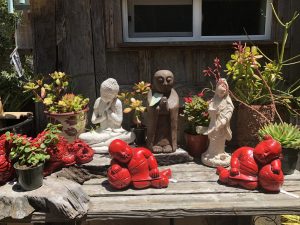The Cost of Kindness
The world is in pain. We are feeling the effects of crisis on every level; we are suffering. In this condition, when we feel weak, it’s almost a knee-jerk reaction to fight, to lash out, to argue, accuse, bully, complain, and blame. But that only creates more suffering. And so it goes, and has been going, over centuries. But this doesn’t have to be the human condition. We have choices. And by now we really do need to know better, and choose differently.
Sometime around 30 BC Hillel said “If not now, when?” Now is the time that we need to dig deep within us, to find the courage and make the changes we need to make in order to survive. Indeed, our very survival is at stake. Our brothers and sisters are giving years of their lives, if not their very lives, in wars. Our children are killing themselves to escape being tormented by their peers for what are perceived to be their differences. The cost of war, economically and personally is horrendous. The cost of hate, violence, and intolerance is just as bad. We have to stop the bleeding, and we have to heal.
It doesn’t have to take an act of Congress to make a change. It only takes an act of kindness, or many little acts of kindness that all add up to getting our priorities straight. We need to shift from focusing on the material, on the “stuff” in life, and instead focus on people and relationships. We need to pay attention, to be receptive, to be honest and to show that we care. Kindness is a virtue that we need to cultivate and value. It is the salve for our wounds. It is the medicine for our dis-ease. We need to invest our time and energy into programs that promote kindness. This will pay off for us in the long run.
There are many organizations making a conscious effort to practice and promote kindness in our communities. One group is Big Brothers Big Sisters. Youth who are identified as “at-risk” are brought into the program and matched with a mentor. A Public/Private Ventures study shows that children matched with a Big Brother or Big Sister, as compared to their peers, are 46% less likely to begin using illegal drugs, 52% less likely to skip school, and one-third less likely to hit someone. The financial cost to support a match is just $1m200 per year. Contrast that with the cost to incarcerate a youth in Juvenile Hall at $125,000 per year. Mentors in this program are volunteers, and most will tell you that as much as they see that the youth are getting out of the program, they feel that the benefits are mutual.
“Karuna” is a Sanskrit word that means “compassionate action.” It refers to any action that is taken to diminish the suffering of another. As we help others, as we extend kindness, we all benefit. By serving each other we are serving ourselves. “Metta” is a Pali word that means loving-kindness, benevolence, fellowship, goodwill, and friendliness. Metta is the strong wish for the welfare and happiness of others. It is an attitude of altruism.
There is no cost to kindness. A smile, a word of thanks, a good deed, a friendly gesture — there is no cost to these things, and yet the benefits are priceless.
Ellen DeGeneres is now signing off her show with the statement: “Be kind to one another.” I heard that and was inspired. We all have to do our part. We need to be ever mindful that kindness must be practiced and demonstrated. To help with this I created “The Kindness Movement.” It’s a simple commitment of seven days of putting kindness into action. It costs nothing to join The Kindness Movement. And it is very likely that as the movement spreads the benefits will be far-reaching. The Internet holds that power, as it is an illustration of our interconnection.
We are all in this together. The time to recognize our connection to each other, and to be kind to one another, is at hand. It all starts right here, right now. Please join us in The Kindness Movement. Thank you for your kindness.

























